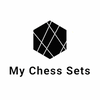Chess, a game that incorporates strategy, intellectual prowess, and sometimes mere fortune, has fascinated people for centuries. Its journey from an ancient game of advice for monarchs to today's competitive sport illustrates a rich tapestry of historical evolution. This article delves into the origins, significant developments, and the cultural transfers of chess across different civilizations.
Ancient Beginnings
The earliest predecessor of what we now recognize as chess is believed to have originated in northern India during the Gupta Empire, around the 6th century AD. Known as 'Chaturanga', which translates to 'four divisions of the military' — infantry, cavalry, elephantry, and chariotry — these were represented by the pieces that would evolve into the modern pawn, knight, bishop, and rook, respectively.
Chaturanga was played on an 8x8 grid board, which is strikingly similar to the modern chess board. It was designed not just as a game but as a strategy simulator for battles. Thus, it integrated both elements of chance, with dice originally used to determine moves, and deep strategic thinking.
Spread Through Persia
The game of Chaturanga spread westward to Persia, where it was adapted into a game called 'Shatranj'. The assimilation of chess into Persian culture is a significant milestone in its history. Shatranj eliminated the dice, pivoting the game more towards strategic skill rather than luck. Persian literature from the 7th century contains detailed accounts of chess, indicating its significant role in Persian society.
When the Arabs conquered Persia in the 7th century, they took up the game and it moved further towards the Arab world and subsequently across the Muslim world, reaching Southern Europe through the Moors’ conquest of Spain and the Byzantine Empire through trade.
Evolution in Europe
In Europe, the game underwent substantial transformations that led to the game we recognize today. By the 15th century, the rules of Shatranj had evolved in southern Europe to increase the speed of the game. This gave rise to more dynamic pieces, such as the modern queen and bishop, making the game more exciting and strategically complex.
The name of the game also evolved from the Persian “Shatranj” to the early English “Ches”, and eventually, by the 16th century, it was known as chess.
Standardization of Rules
The next major development in chess came in the late 19th century with the establishment of standardized rules. The first modern chess tournament was held in London in 1851, and as international enthusiasm grew, so did the need for unified regulations, leading to the formation of the International Chess Federation (FIDE) in 1924.
The standardization of chess rules by FIDE was a turning point that transformed chess into a professional, structured sport with international appeal, culminating in grand tournaments and intense competitions.
Chess in Contemporary Times
Today, chess is universally recognized and played around the globe. Technological advances have also revolutionized how the game is played and studied. Online platforms, chess engines like Stockfish and databases full of past games, provide modern players with unprecedented tools to refine their strategies and skills.
Moreover, AI (Artificial Intelligence) breakthroughs have introduced a new era of chess play. AI-powered chess engines are now capable of defeating human world champions, a testament to both technological advancement and the enduring complexity of chess.
Conclusion
The narrative of chess, from ancient beginnings as Chaturanga to its status as a globally revered game, showcases not only a rich cultural adaptation but also the evolution of human intellectual pursuits in strategic thinking. As it continues to evolve, chess remains a profound testament to the confluence of history, culture, and mind sports.
Explore our large collection of luxurious chess sets!